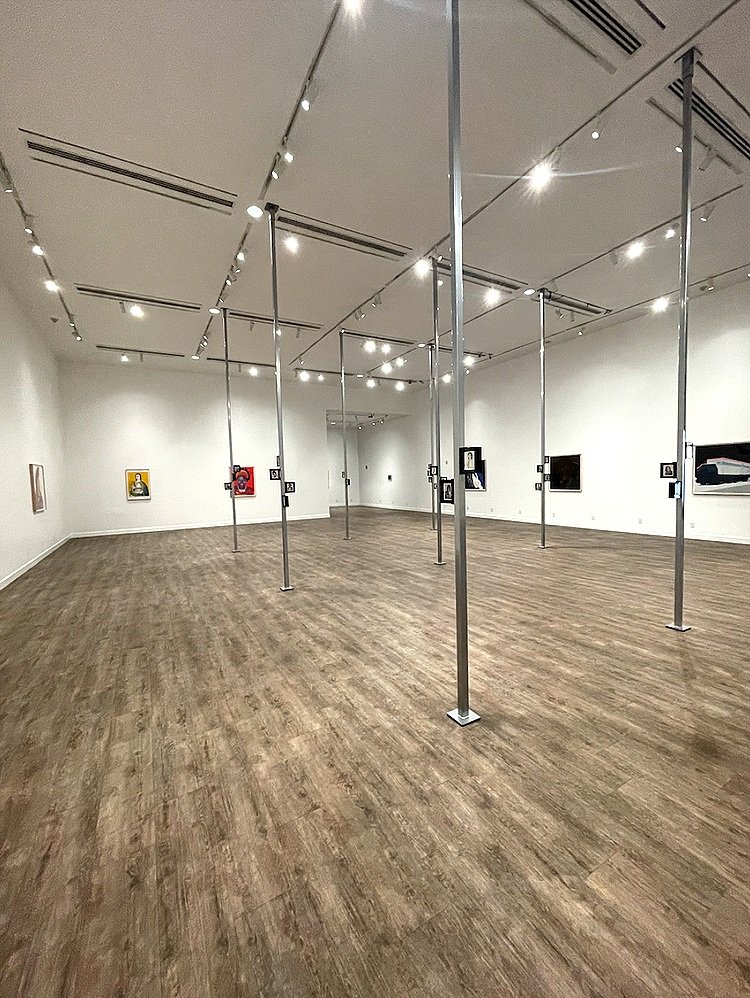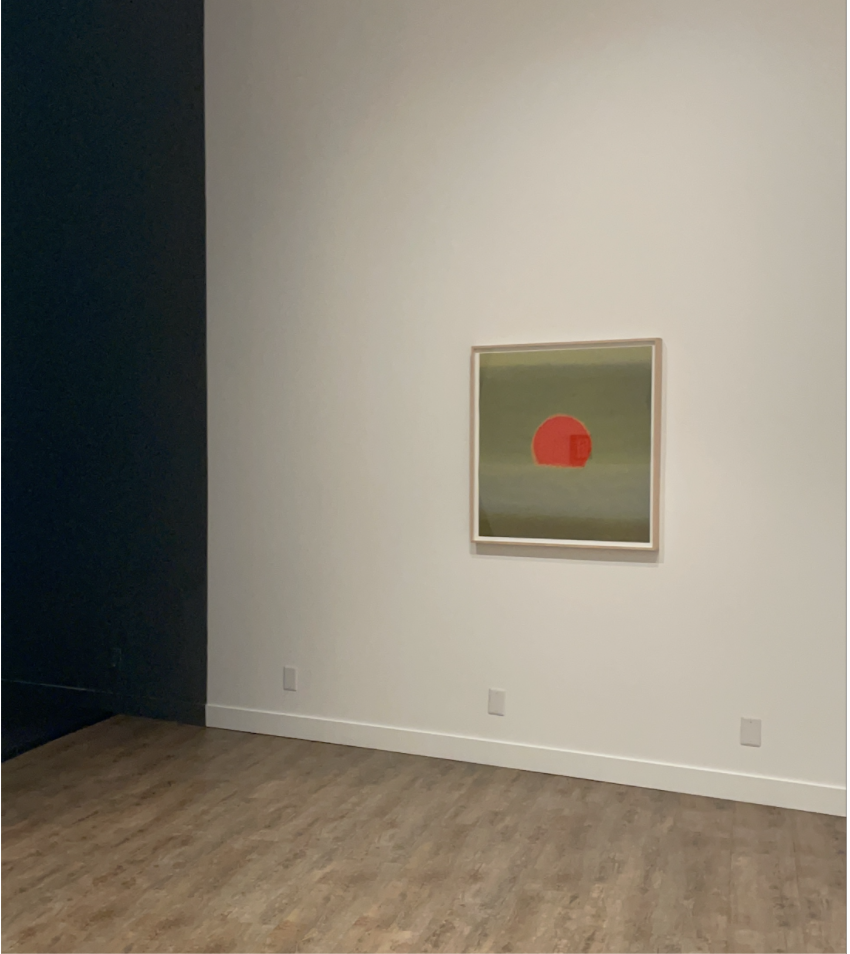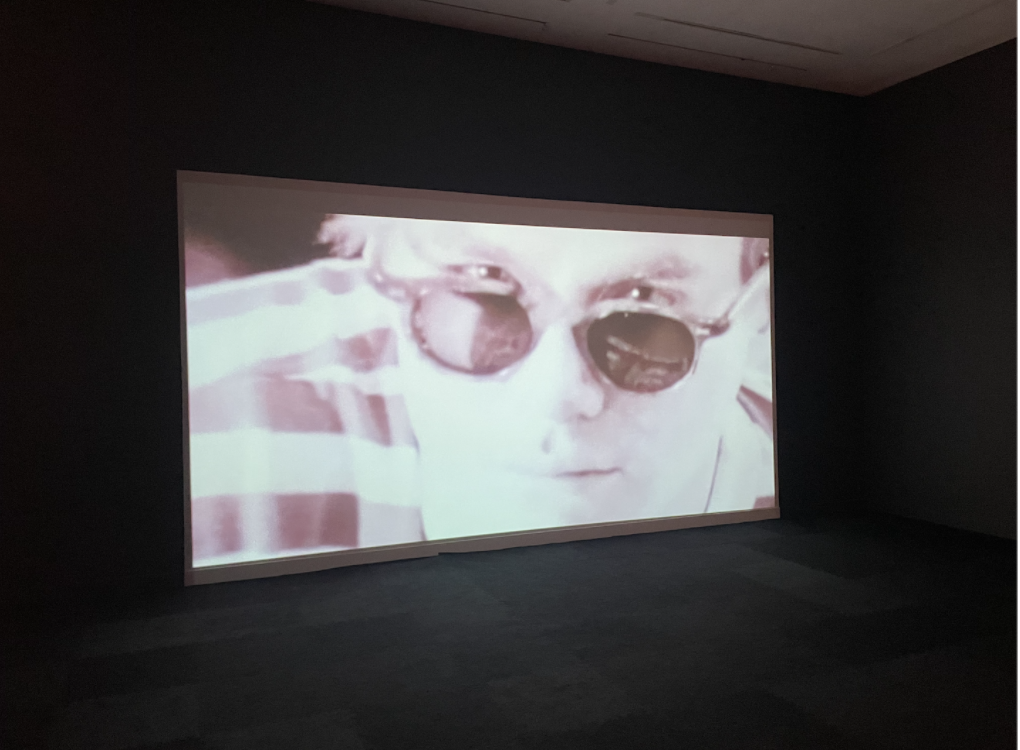Faces & Names
Faces and names, I wish they were the same… if we all looked the same and we all had the same name, I wouldn’t be jealous of you or you jealous of me…
-Lou Reed & John Cale
Now on view: “Andy Warhol: Selections from the Luckman Permanent Collection. Admission is free and all are welcome to attend this viewing of over seventy Polaroids, prints, videos, and never-before-exhibited silkscreens at the Luckman Gallery, part of Cal State LA and supported by The Andy Warhol Foundation for the Visual Arts, designed by Adalberto Charvel of the San Francisco Museum of Modern Art.
Campbell’s Soup (Black Bean), 1968
One would expect to see the typical works in the Warhol repertoire such as his Campbell’s soup cans, Coke bottles, or silkscreen prints of celebrities. While there are a few of these more recognizable works peppered around the perimeter of the spacious gallery, there are an overwhelming amount of Polaroids and 8x10 photographs taken by Warhol of the people he lived and worked with. They ranged from photographs of friendly-looking pets to parties with recognizable New York designers, celebrities, and socialites. The number of photographs was so overwhelming at the first step into the gallery that I nearly forgot whose work I was viewing. I never expected a show all about Andy Warhol to be so photo-heavy. I was taken back by the normalcy of it all. These pictures looked like ones that I have seen time and time again in photo albums of my friends and me in the early aughts and even ones I see now on Facebook and Instagram.
The Luckman Gallery at Cal State LA is made up of two main interior spaces connected by a short hallway. The first gallery is a large, white-walled, brightly lit rectangular room. Around the perimeter are Warhol’s larger photographs and his more popular silk screens. In the center are nine floor-to-ceiling poles fitted with framed Polaroids, reminiscent of your Facebook wall. The viewer is permitted to physically “scroll” through the photographs, weaving in and out of them with their body.
In the small hallway leading to the next room are more photographic prints, Polaroids, and one screenprint, titled Sunset, 1972, a commission by architecture firm Johnson & Burgee to adorn the Hotel Marquette in Minneapolis. One of the hundreds of prints made of Sunset can be seen here. It is the only work of Warhol’s displayed in the entire exhibition that does not include a human form. It is surprising and a nice respite from the guesswork of figuring out who’s who in each of the photographs. The viewer can let their mind relax and take in the beautiful screen-printed sunset as it exists.
Sunset, 1972
As you turn the corner from the hallway, you hear a faint sound of a guitar, and a man singing in a monotone voice faces and names… only cause trouble for me. Instantly you remember the impact of the numerous photographs of people you just encountered. They may not mean anything to you personally, but they were a part of this artist’s life. You enter the smaller, dark, almost pitch-black room and you see Excerpts from “Screen Tests,” undated. The song you hear, “Faces and Names,” written and performed by Lou Reed and John Cale, formerly of the band The Velvet Underground. This song was written for the album Songs for Drella in the wake of Warhol’s passing. In 1989, Jon Fareless of The New York Times said of the album, “Like Warhol’s artworks, the songs Lou Reed and John Cale wrote for the [Velvet Underground] used simplicity and repetition, and often presented jarring images without editorializing.” The song playing here is sung in the first person from Warhol’s perspective. There is something unsettling about hearing the artist speak through the music you are listening to while looking at soundless moving images from his own life. As you stand in front of the screen (chairs and benches omitted due to Covid-19) and listen to the song on repeat, you see him, Andy Warhol, in his studio, taking video of himself, his friends, and his projects.
Still taken from Excerpts from “Screen Tests”
At first, If I am being completely honest, the video was almost boring, and the haunting monotony of the music was not making it any easier to digest. After standing through a full loop of video and song, I realized why I was so uninterested in this “screen test” at first. When paired with the same, relatively short song, and having both the video and music played on a loop, it is like watching the same Instagram story again and again. Faces and names… Faces and names… When you tap through your friend’s Instagram stories, do you know every person’s name in the photos and videos? Do you really care about what they are talking about or showing you? We consume this type of media to pass the time or fulfill the insecurity and fear of missing out that every social media-having person of the twenty-first century feels inside of us. We do not know all the people in our friend’s pictures and posts, so to us, they are faceless placeholders that we get to sift through to pass the time. Like the forgettable people we see every day on social media, the people in the photographs and videos taken by Andy Warhol share the same characteristics. We may recognize certain places or famous people, but that holds little meaning to us in the present, as we are now. The faces are just there, they blend into each other and the walls of the gallery and they have no connection to the viewer other than being a photograph taken by a famous artist. Arguably, they held meaning to the artist, the man behind the camera, just like the pictures we post have meaning to us, whether it is sentimental or trying to inspire jealousy in the people who “follow” us. Warhol was the first influencer, the viral tastemaker of the 60s, 70s, and 80s because he crafted his life that way. He made his images available to the public early on and allowed his public glimpses into his mind and the creation of his work, but only enough to make people interested. Never too much.
We do not know exactly why Andy Warhol took as many photographs and videos as he did of his pretty normal life in New York City and beyond. And yes, I mean normal. Aside from the superstar artist persona and his friends in high places, he was just a normal person that hung out with friends and took photographs to capture those moments and memories. The wall text in the gallery describes Warhol as “[a] skilled social networker (analog and decades ahead of the trend).” And there in the gallery, in all of its mediocre glory is the artist, his life, his friends, and how he lived. Photograph after photograph of people, famous or not, family, friend or stranger. Who are these “faces and names” to Warhol? He documented his life so carefully and with great gusto. Is this really that different from what we do today? I say no! We all craft the story we would like the world to see. Only we know the true mediocrity of our every day. Andy Warhol pushed himself to document every one of life’s little moments. These photographs tell the beginning of a story that can only be completed through the stories only Warhol himself could tell.
-AC



